Flowers and foliage of our native Allegheny spurge (Pachysandra procumbens, below) are delightful, but the argument to encourage planting the native rather than the more aggressive Japanese pachysandra (Pachysandra terminalis) is rarely successful. The Japanese version spreads in the toughest, dry shade while the native is slow, though steady, wherever it’s planted. Despite its poor reputation amongst native plant lovers, the non-native serves a purpose that the native cannot.
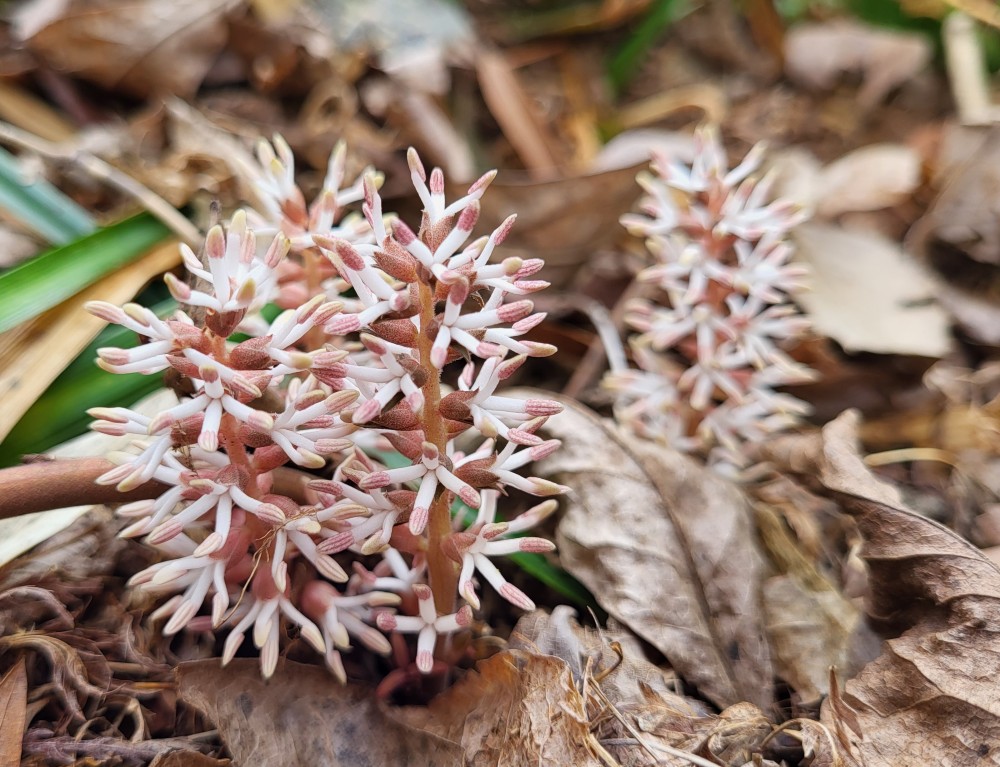
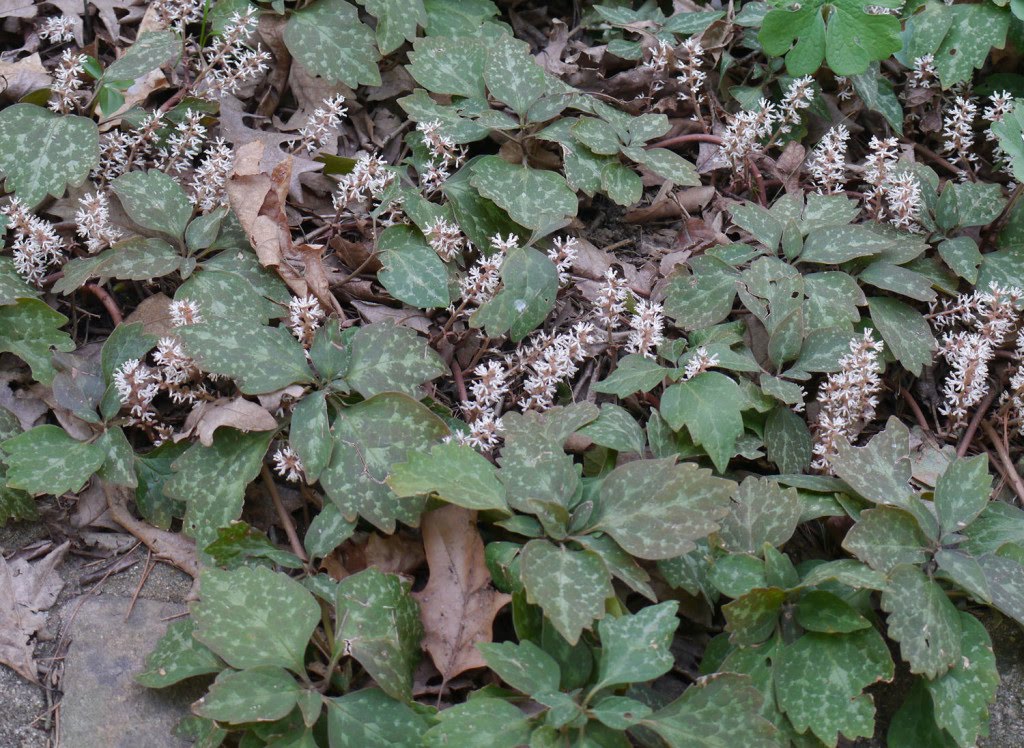
There are large, dry areas of the garden where roots of maples and poplars are visible above ground, but Robb’s spurge (Euphorbia amygdaloides var. robbiae, below), wood poppies (Stylophorum diphyllum), and Christmas ferns (Polystichum acrostichoides) combine to fill with a jumble of foliage and flowers. Knowing that Allegheny spurge is slow, it’s planted in the smallest gaps where it shows beautifully in flower, but where growing into an immediate dense carpet is not required.
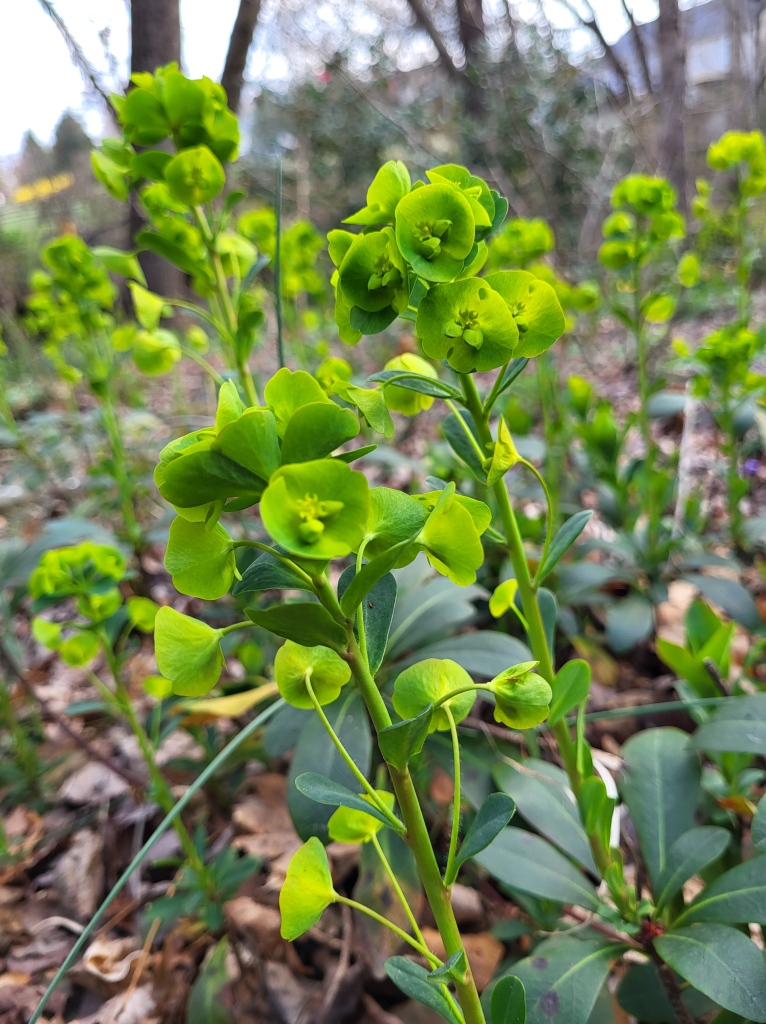
I’ve taken a hankering to sedges (Carex ‘Feather Falls’, below) in the past few years, many grass-like natives that I often see in the wild, but also several tough non-natives that give a bit of textural and color contrast to neighboring broad leafed perennials. Clumps of a few are spreading noticeably , but most seem content to add a little at a time.
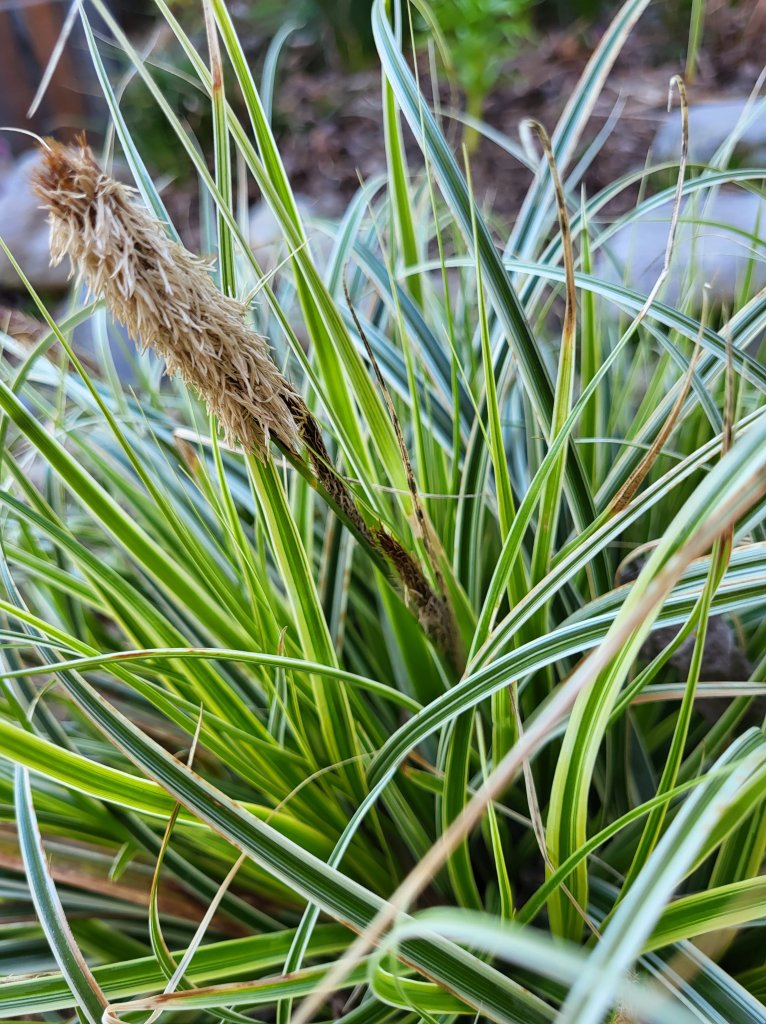
I have long forgotten the names of most of the dozen or two (maybe three) barrenworts (Epimedium, below) in the garden. For much of the year their display fades into the background while filling the role of thriving in the driest shade under a large, purple leafed European beech (Fagus sylvatica ‘Purpurea’), but today colorful, dainty blooms are rising from the piles of leaves. With their slow growth, this is one I prefer to purchase in larger pots available in the garden centers, but ones obtained in smaller pots are finally making a show. All are excellent choices for this difficult, dry shade.
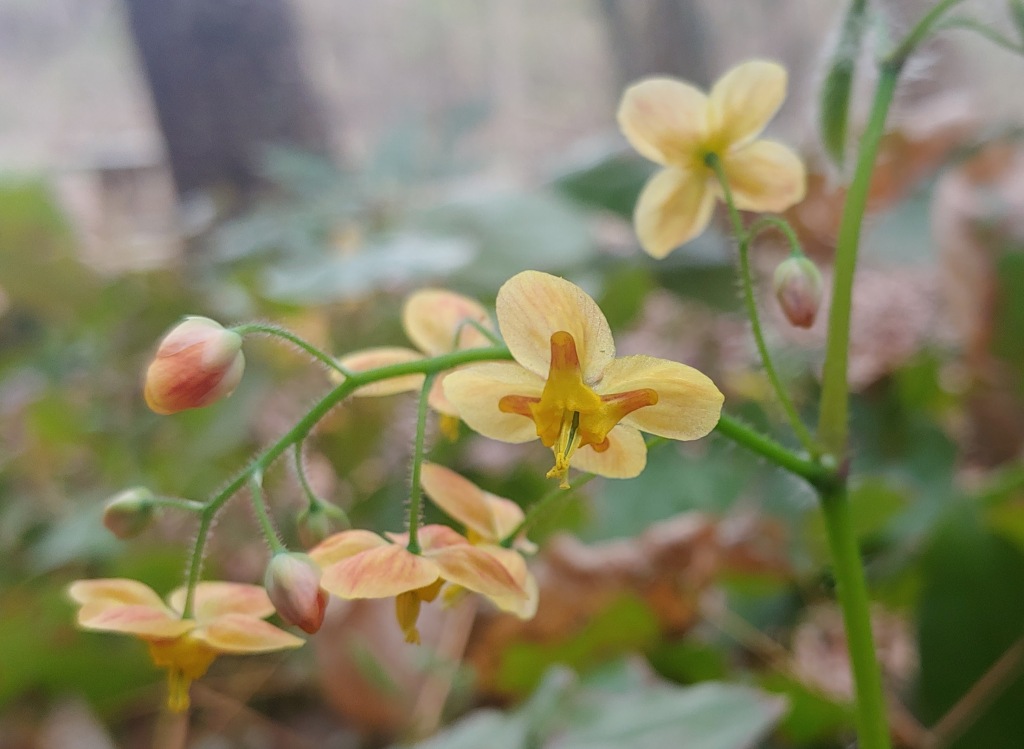
Finally! Someone has good native s7ggestions for the dry shade my little bit of yard has. Thank you! Its,such a tough area and nearly impossible to find natives that thrive in it. Really appreciate the info!
Unfortunately, there are few options for natives that will thrive in dry shade. My most successful are non-natives, but of the natives I’ve found that ferns are the best choice, in particular Christmas ferns.
Natives are not as practical for home gardens within chaparral or desert climates here. Most of our natives are very combustible, visually unappealing, and short lived. However, some of the best plants for home gardens here are native to similar climates in other regions. Some are from ecosystems that are less reliant on fire, so are not so combustible. Some are cultivars, but some are comparable to how they were found in the wild. Too many modern cultivars of plants that are not so well suited to the climates here are more popular than they should be.
We must take care that natives are planted in appropriate conditions. Our gardens are often very unlike native habitats. While fire is not an issue for east coast garden, we must understand varying soil and sunlight conditions. I often fail if only by a fraction, and while some plants are very tolerant, others are not.
The primary problem that I encountered with large scale landscapes that are outfitted with natives is that they are so excessively irrigated that the native plants rot and die. so-called ‘landscape’ companies brag about using native plants to conserve water, but then water them to death. The landscapes are typically well designed, but then not adequately maintained. It is infuriating.
Don’t get me going on irrigation. We’ve been a bit dry to start the year, but we get many times the rain that you do. Irrigation systems have become the norm in the area as people are told they must water regularly. I tell people that I water when I plant, maybe, if a storm isn’t expected in the next day or two, and then never again. I’ll admit that my lawn doesn’t like the dryness, but I don’t care about that patch of clover and dandelions anyway.
EXACTLY! (but there is no need to get started.) Much of the landscapes here lack irrigation, and we like to keep it that way. We add a few items during autumn, and they must be on their own for the following year. They get no rain between spring and autumn. Plants need not be native, but they need to be able to survive like natives.